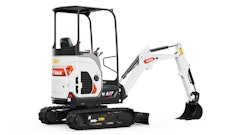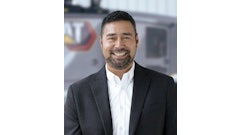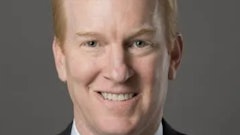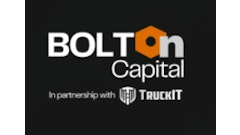With 2010 fading quickly, concrete contractors and producers have to wonder what's in store for 2011. The ARRA stimulus package was a step in the right direction this year, but did its impact meet expectations and will the projects it "stimulated" set the tone for next year, or will a stalled highway bill and questions about the future of the Highway Trust Fund dictate near-term industry prospects. These are among the questions Concrete Contractor posed to industry experts. Here's what they had to say about 2010 and where the industry is heading next year:
ARRA stimulus impact
Concrete Contractor (CC): What impact did the American Recovery & Reinvestment Act (AARA) have on highway contractors and concrete producers in 2010? Did it meet, exceed, or disappoint your expectations?
Ed Sullivan, Chief Economist for Portland Cement Association (PCA): "Ultimately, we are very disappointed in where the funds went. Introduced as an infrastructure bill, in actuality very little went into infrastructure. Major infrastructure construction takes time to get into the marketplace, hence most of the money was used to repair existing roads.
"Over the next 25 years, there will be a projected 50 million more drivers on the highways. If we don't invest more in new highway construction, drivers will experience horrendous traffic jams in cities, which ultimately will hinder our country's economic growth."
Kerri Leininger, Vice President of Government and Political Affairs, National Ready Mixed Concrete Association (NRMCA.): "Once the final amount for infrastructure projects included in ARRA was released ($81 billion for infrastructure) unfortunately the industry immediately knew it was far too low to have much of an impact to turn around the industry's declining numbers. Especially since the $81 billion was divided among highways and bridges ($29 billion), transit and rail ($16.4 billion), water projects ($18 billion), and buildings ($18.5 billion).
"The majority of the projects that would be, and have been, funded since ARRA's passage were considered "shovel-ready," which translates mainly to asphalt overlays, filling potholes, and for water infrastructure, re-cementing sewer systems. By design, the ARRA pushed states toward focusing on simple maintenance - which can be completed much faster than proper upgrades or new construction. And many of the physical projects have been plagued by permitting problems and delays in ARRA payouts."
According to NRMCA, "Although the ready mixed concrete industry has seen some of the ARRA money, by and large the notion that all our nation's highways, bridges, and tunnels would be repaired and rebuilt using ARRA money couldn't be further from the truth, leaving the RMC industry rather disappointed with the outcome of the stimulus. In the end, passage of the ARRA - with a large percentage of the funding going toward infrastructure - ultimately took the pressure off Congress to pass meaningful transportation reform legislation."
Leif Wathne, P.E., Vice President of Highways and Federal Affairs for the American Concrete Pavement Association (ACPA): As a starting point, the concrete pavement industry welcomed the American Recovery and Reinvestment Act (ARRA). In terms of the actual program, however, it had mixed results for the concrete pavement industry. There were some highway, roadway, and airport pavement construction projects started and completed quickly and efficiently. But we simply need to do more to improve the capacity and conditions of our nation's surface transportation infrastructure.
"There are three critical issues that are hanging in the balance:
- Condition and capacity - Both the condition and capacity of highways and roadways in the United States are sorely lacking … and well documented. Road builders and agencies have been lagging behind for generations as federal funding has fallen short of the critical needs of our system.
- Jobs - The overall construction industry is still facing unemployment in the range of 20 percent or more. Transportation construction plays a vital role in our nation's economy, not only by providing well-paying, permanent employment, but also by supporting business and commerce in the timely shipment of goods to market.
- Competition - In nations such as Russia, Brazil, India, and China, there are large scale investments being made in highways and other surface transportation infrastructure. It is no coincidence that these nations are emerging not only as economic superpowers, but also formidable political powers, as well.
"The short-term gains realized from the ARRA will be lost without a robust highway bill now. It is for this reason the American Concrete Pavement Association is urging quick passage of a multi-year highway bill, as well as the required funding mechanism, such as an increase in the federal motor fuels tax."
Highway Bill
CC: The much anticipated highway bill remains stalled. Do you see Congress passing the bill soon after the November elections? If so, what impact will it have on the highway industry?
Wathne, ACPA: "We do not anticipate the highway bill being passed this year, even though we remain hopeful that Congress will muster the will to tackle the challenge before the end of the year. The answer to the question of what impact it will have on the concrete pavement industry will depend largely on the scale of the program. Even so, we expect the bill, when signed into law, will help reduce the high unemployment in the construction industry; create good jobs; and allow companies and agencies to plan for both the short-term and long-term needs of the federal-aid highway system."
Leininger, NRMCA: "The short answer is simple: Congress won't touch a new transportation bill at earliest, until 2011. The most we will see on the transportation front before 2011 is Congress passing another extension before their winter recess to fund transportation at the minimum levels from January 1, 2011 until roughly the spring of 2011; when the Highway Trust Fund is thought to run out of money again.
"This is the best case scenario. Given the current political and economic climates, it is possible that a new comprehensive transportation bill won't be seen until after 2011. This continued cycle will probably leave the RMC industry in the same state it is now. However, with new regulations, the approaching depletion of ARRA funds, and the uncertainty of when a new highway bill will appear or its amount, this could make for a bleaker outlook in 2011."
Says Leininger, "Simply offering extension after extension of the highway bill does not instill consumer confidence. Extending the highway bill beyond the end of the year fails the RMC industry, it fails the transportation industry, and it fails the U.S. economy. Congress must act swiftly when leaders return after the elections to pass meaningful transportation legislation."
Sullivan, PCA: "The administration became sidetracked with the health care, and now Congress has an anti-spending mentality. It is unlikely that we will see a highway bill in fiscal 2012 and maybe not until 2013. In the meantime, another extension will be necessary. It's not just economics, it's also politics."
Highway Trust Fund
CC: What does the future hold for the Highway Trust Fund (HTF)? Where will additional funds come from knowing that alternative-fueled vehicles are gaining in popularity and the gas tax remains unchanged?
Leininger, NRMCA: "The future of the Highway Trust Fund (HTF) is not looking good. The combination of higher miles-per-gallon vehicles, alternative fuels, and people altogether driving less, has wreaked havoc on the HTF. In addition, SAFETEA-LU established that most funding mechanisms for transportation be depleted by its expiration, forcing Congress to act in a timely manner on reauthorization. Since Congress has failed to act on reauthorization, this has added an additional layer of complexity to simply maintaining the HTF let alone creating new revenues. This has left the HTF continuously bankrupt, and in need of multiple bailouts from the general fund since even before the expiration of the current highway bill in September 2009.
"With zero interest on the part of the White House or Congress to raise the gas tax or index it, or even pull the trigger on new funding mechanisms, the HTF has become obsolete. This leaves very few avenues to fund transportation. It is thought that a new transportation bill, whenever it's introduced and passed, will only fund maintenance on our nation's transportation network and not updates or any new construction. (Although, how that will be paid for is even up in the air)."
Adds Leininger, "If this is the future for transportation and the HTF, then it is a good bet our industry will be relying on more tolling, public-private partnerships (PPPs), and other innovative, yet private funding methods."
Sullivan, PCA: "The Highway Trust Fund hasn't benefitted from a gas tax increase in 17 years. When one factors in inflation, the fund continues to lose ground. The gas tax has to increase dramatically.
"At this point, I don't believe alternative-fueled vehicles are having a significant impact on the fund. There are somewhere between 275 and 300 million vehicles on the road, and only a very small percentage of them are alternative-fueled vehicles, with an estimated 10 million more of them taking to the roads each year.
"The key to key to current funding HTV is miles driven, and that is dictated by employment, or rather unemployment in this economy. If you don't have a job, you won't be driving to work. Once we create jobs, miles will go up. In the meantime, the long-range solution may come in some form of privatization."
Wathne, ACPA: "The Highway Trust Fund clearly needs stable revenue sources that reflect consumer trends for using alternate fuels, but also which are tied to the consumer price index or some other metric of the economy. Our posture is consistent with the recommendations presented in the 2007 Commission report, where increases in the federal motor fuels tax is identified as the only viable solution in the short-to-medium term, and a VMT based system is most likely a long term approach."
2011 Outlook
CC: Generally speaking, what will 2011 look like for concrete highway contractors and producers?
Sullivan, PCA: "I think the best we can hope for is a flat situation. The ARRA stimulus package will have less of an impact in 2011 than it did this year, not to mention the passage of a highway bill is questionable for 2011. At the state level, deficits will continue to impact street and local road construction. In 2006, for example, street and road construction accounted for 18 million tons of cement. This year, that figure is down to 5 million tons.
"On a brighter note, a new highway bill and pent up demand for new roads and streets bode well for concrete contractors and producers in 2013 and beyond."
Leininger, NRMCA: "Between new regulations, ARRA winding down, and the uncertainty of when a new highway bill will be passed or what size it will be, 2011 could be as equally bleak as 2010 or worse. This is why our industry must continually put pressure on our leaders to act on meaningful transportation authorization."
Wathne, ACPA: "We are optimistic that both the Highway and FAA bills will be passed in the year ahead. When the programs are enacted, we believe this will have a stabilizing effect on road builders and agencies alike. It generally takes between 12 and 18 months after the highway bill is signed into law for agencies and road builders to hit stride. Even so, it is only with the enactment of adequately funded, robust programs that agencies and contractors can plan for the future; invest in capital equipment; and build, repair, and maintain the surface transportation systems that are so vital to our nation."

















![Hcm Ax Landcros Dual Branded Logo[25]](https://img.forconstructionpros.com/mindful/acbm/workspaces/default/uploads/2025/11/hcmaxlandcros-dual-branded-logo25.Qhg3vUCjoK.jpg?ar=16%3A9&auto=format%2Ccompress&bg=fff&fill-color=fff&fit=fill&h=135&q=70&w=240)

